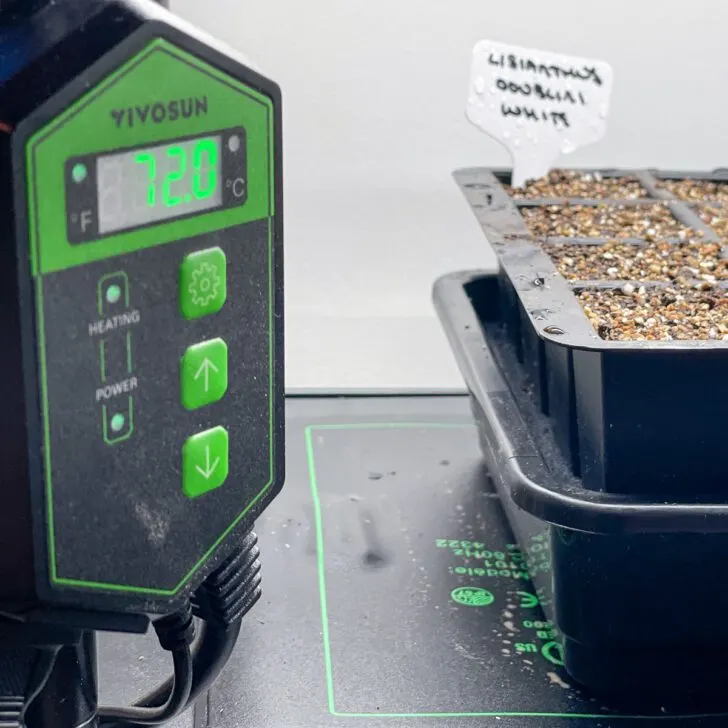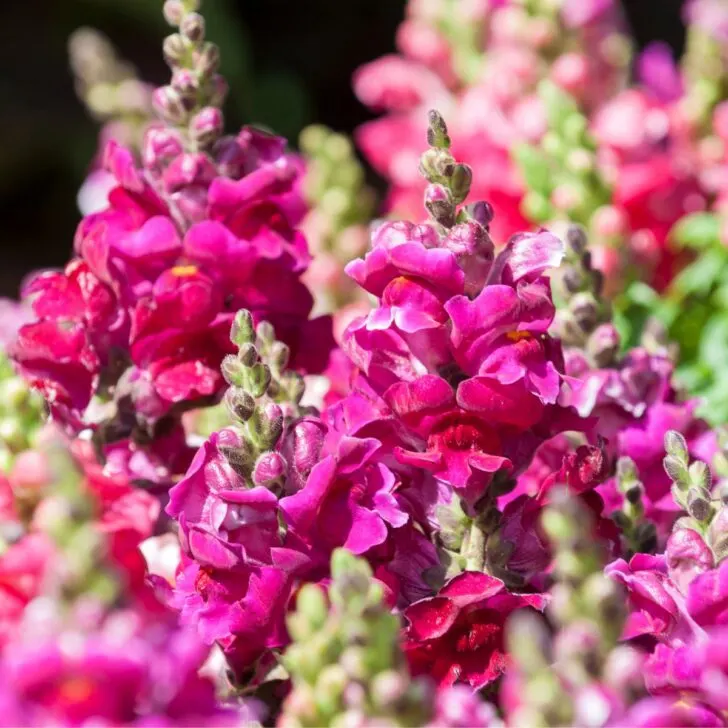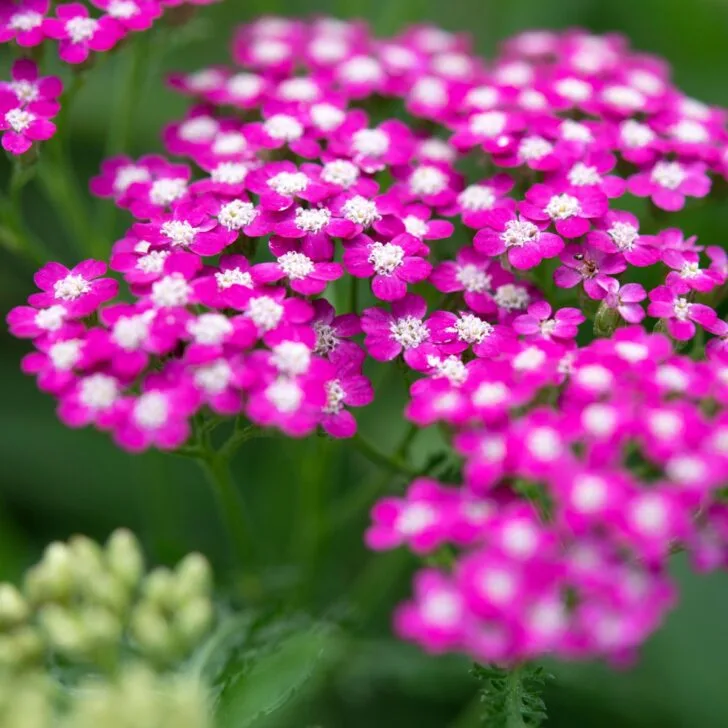Growing lisianthus from seed takes time and patience, but it's not hard! Learn all my tips and tricks for getting the best blooms this summer!

Lisianthus, or Eustoma grandiflorum, is a beautiful cut flower that resembles a rose, but without the thorns! It grows multiple blooms per stem and boasts an amazing 2-3 week vase life.
You can find these blooms in a wide range of colors, from whites and creams to dark blues and purples. This year, I'm growing Doublini White, Doublini Blue, and Blue Picotee, which you can see in the photo above. I can't wait to see how they all look together in the garden!
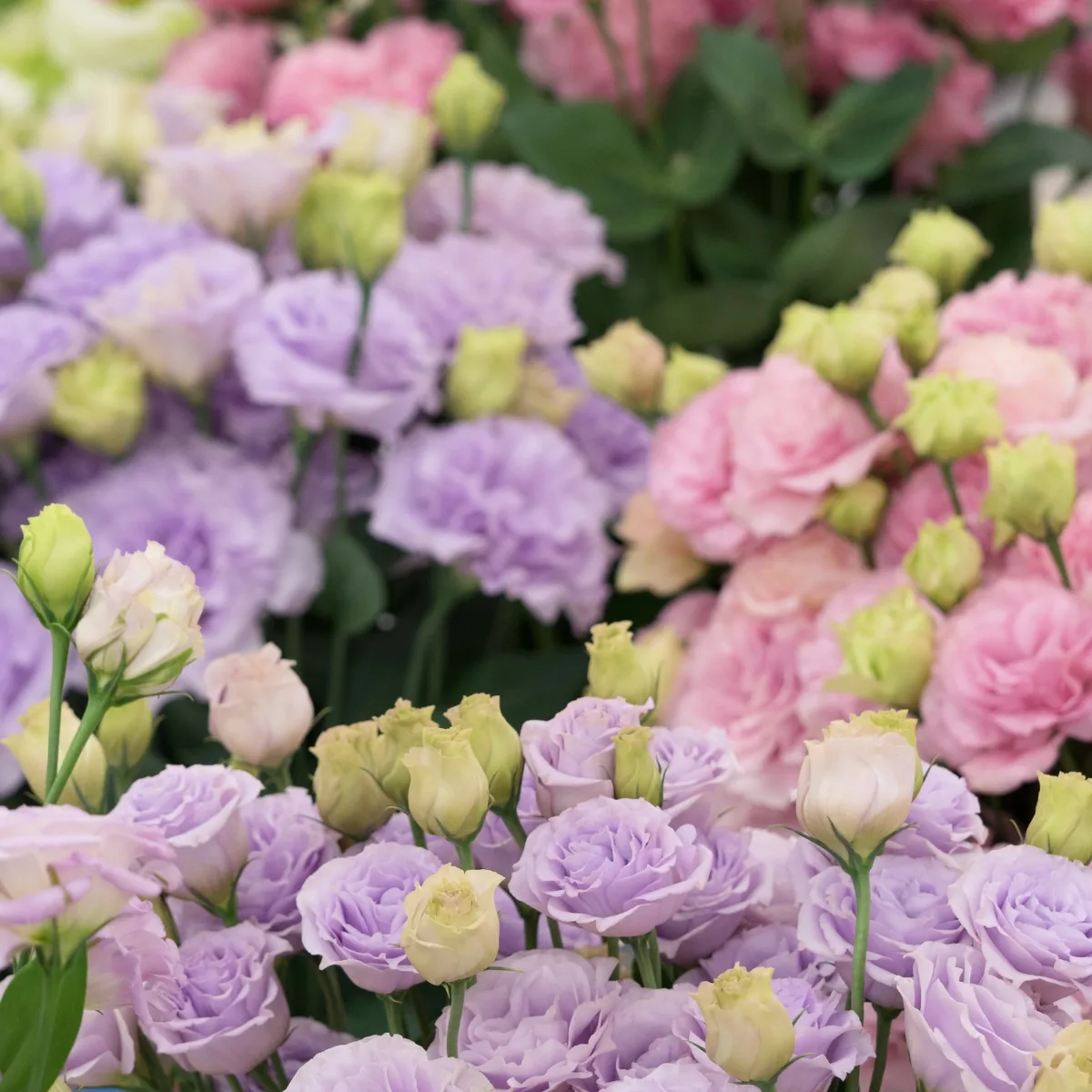
But you probably won't find lisianthus seedlings at your local garden center, because they grow soooooo slowly! While you should plant them out in the landscape in spring, they won't produce any flowers until July or August. Most shoppers want instant impact in their garden and will pass them by for more showy plants.
But if you start lisianthus seeds in January, you can have these unique plants in your garden this summer! Here's how to grow lisianthus from seed yourself!
This post contains affiliate links for your convenience. Purchases made through these links may earn me a small commission at no additional cost to you.
Start the seeds early
As soon as the new year begins, or 12-13 weeks before your last frost date, you should get your lisianthus seeds planted indoors. They can take up to two weeks to germinate, and it will be months before you can harden them off and plant them in the garden.
Order your seeds in late summer or early fall for the best selection. I get my lisianthus seeds from Johnny's, and they have a wide variety of colors and breeds to choose from.
What do lisianthus seeds look like?
Lisianthus seeds are TINY, and basically look like dust. Because they're so hard to hold, they usually come pelletized. That means there's a yellow or white water-soluble coating around each seed that makes it easier to see and handle. They're packaged in a tiny vial inside the seed packet.
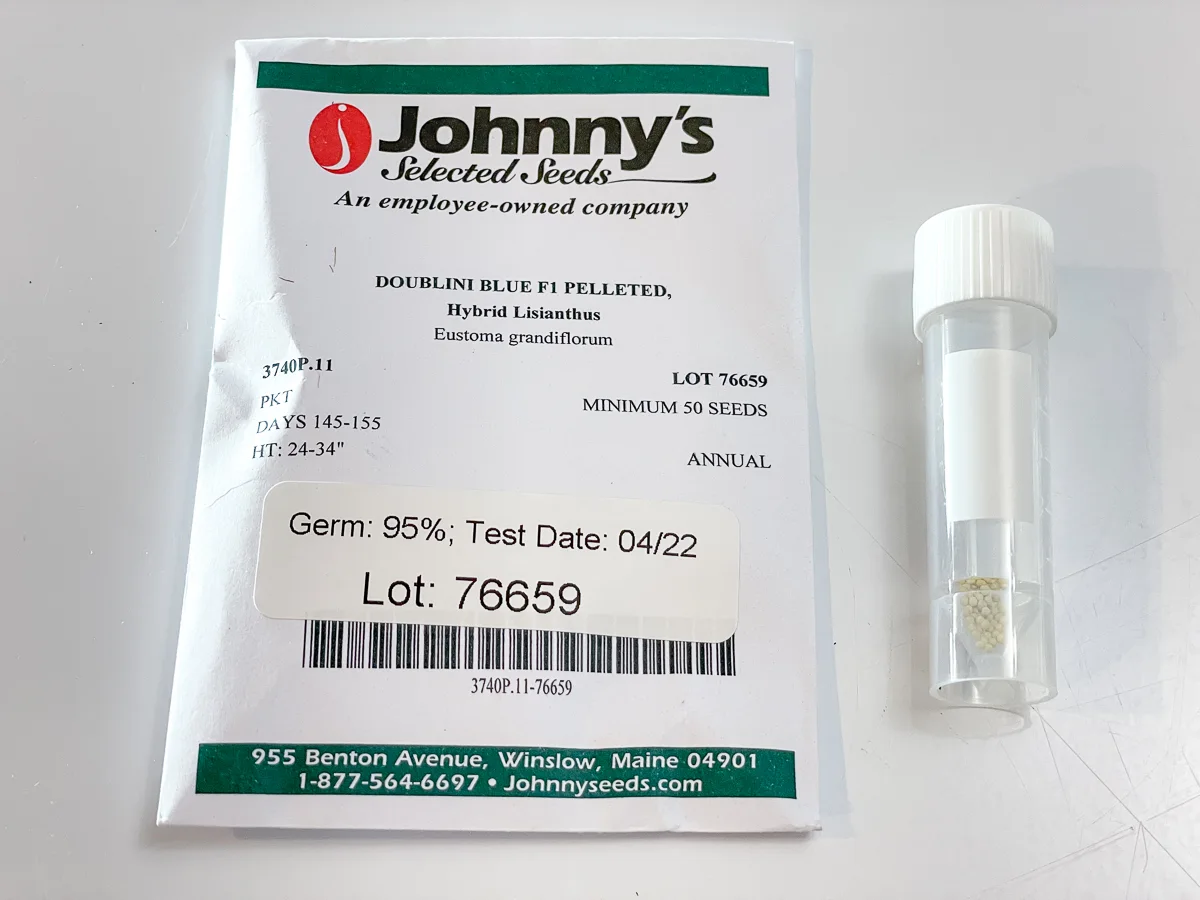
Prepare the soil
There are several different ways to start lisianthus seeds indoors. Your growing method will dictate how to prepare the soil.
Some growers, particularly flower farmers who need thousands of plants, will use soil blockers to create small cubes of soil on a tray. This saves space and air prunes the roots for stronger plants.
I like to keep things as simple as possible, so I prefer to use self-watering seed trays like these. Just fill the bottom reservoir with water, and the wicking mat sucks the moisture up to the soil as needed!
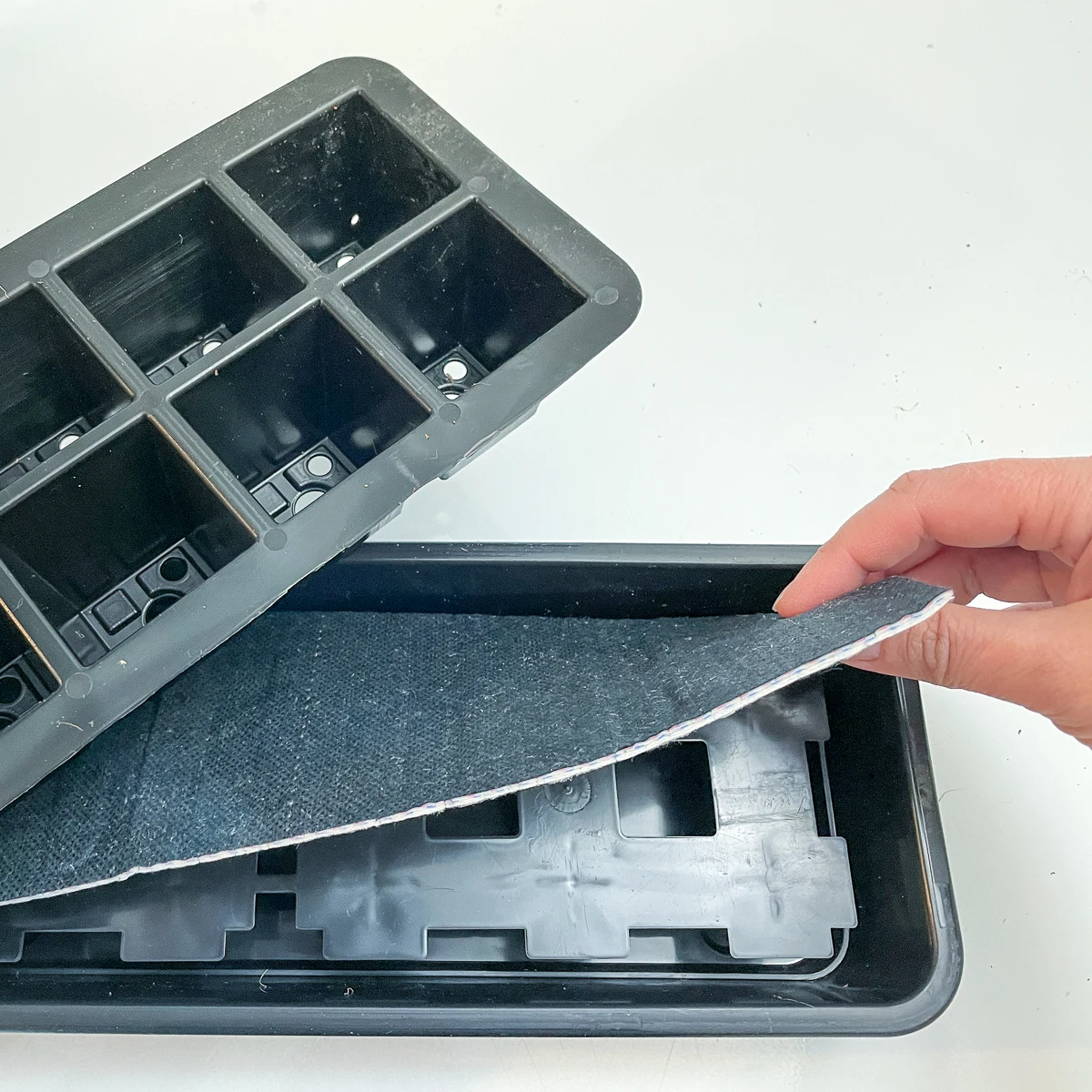
Use a good quality seed starting mix, not potting soil. It's specially formulated to be lighter, so the tiny seedlings can push through easily. Mix it with water until it holds its shape when you squeeze it in your hand without any drips.
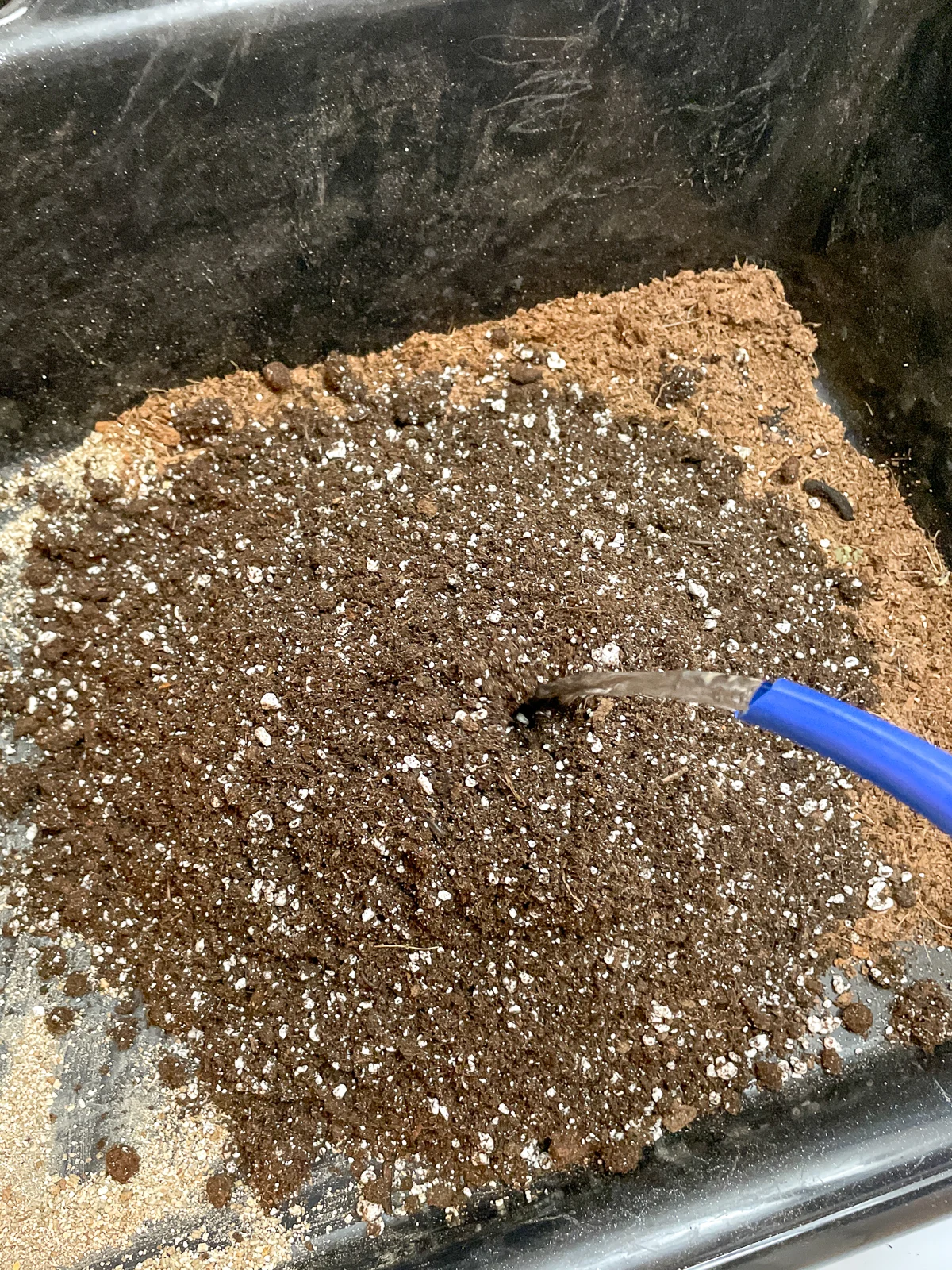
Fill each cell of a clean and disinfected seed tray with soil, then press down lightly to remove air pockets. Top off the tray with more soil as necessary.
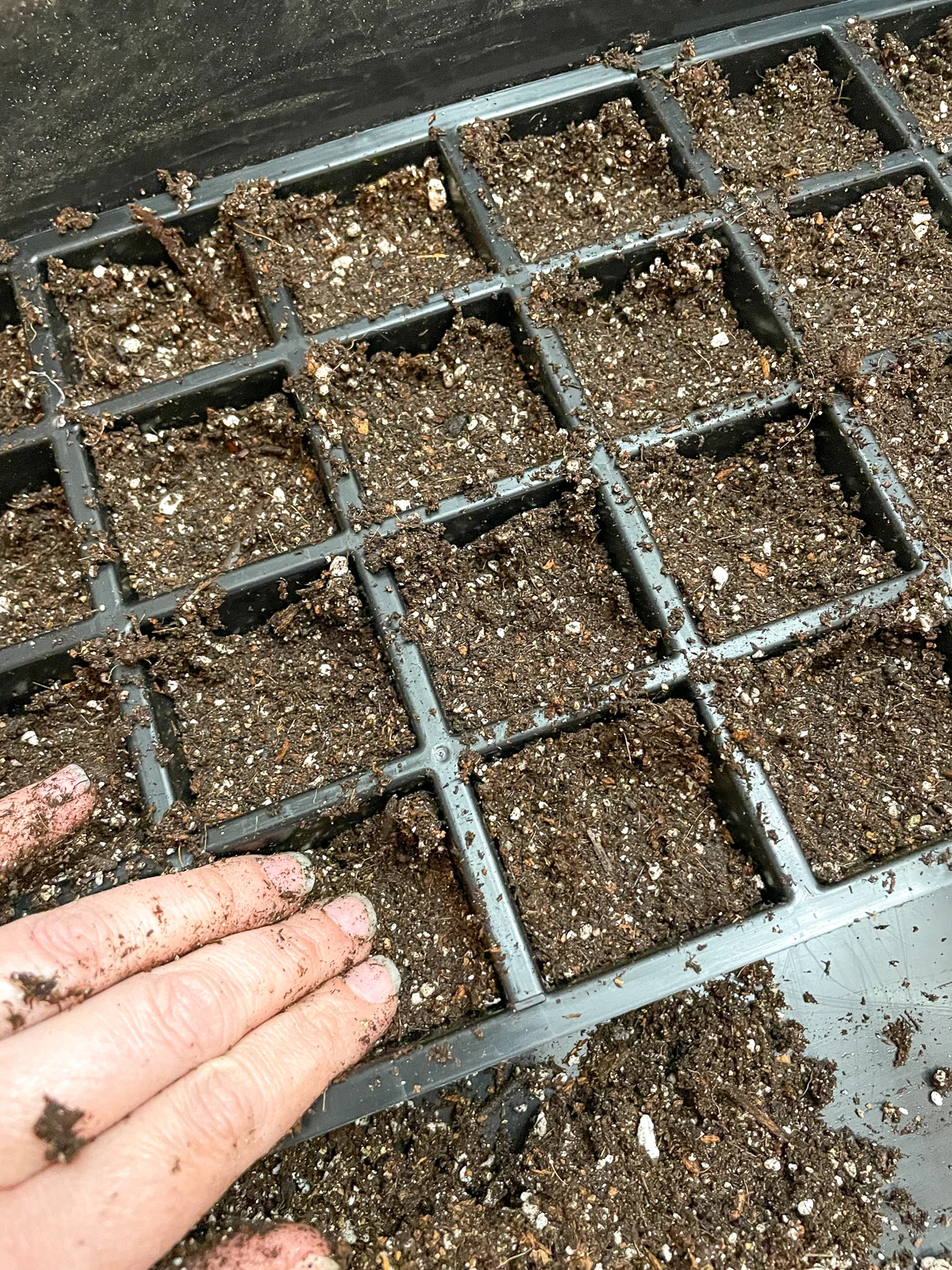
Don't forget to label each tray or section of a tray before you start sowing your lisianthus seeds! Otherwise, you won't know which is which for months!
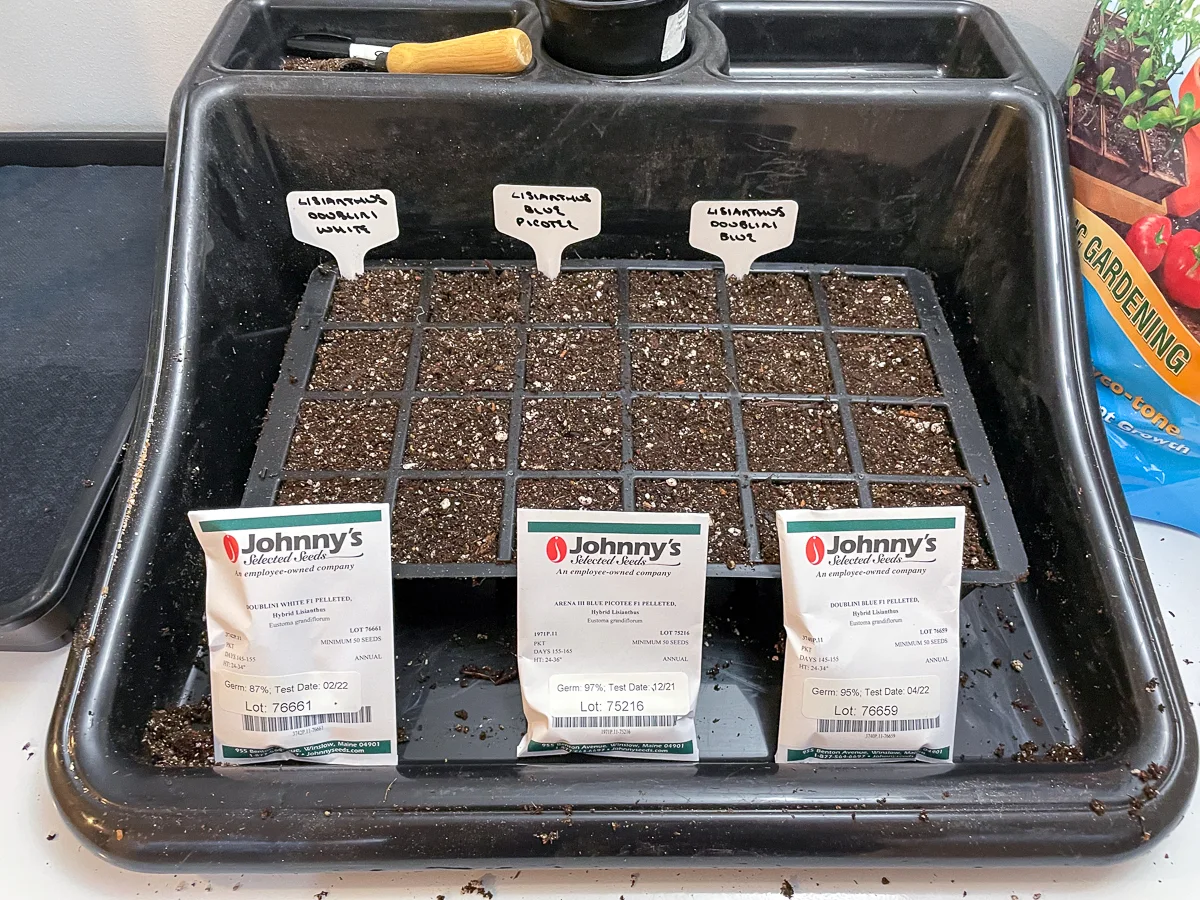
Plant the Lisianthus seeds
Even when they're pelletized, lisianthus seeds are still really tiny! I prefer to dump the vial into a small bowl where they're easy to see and grab each one.
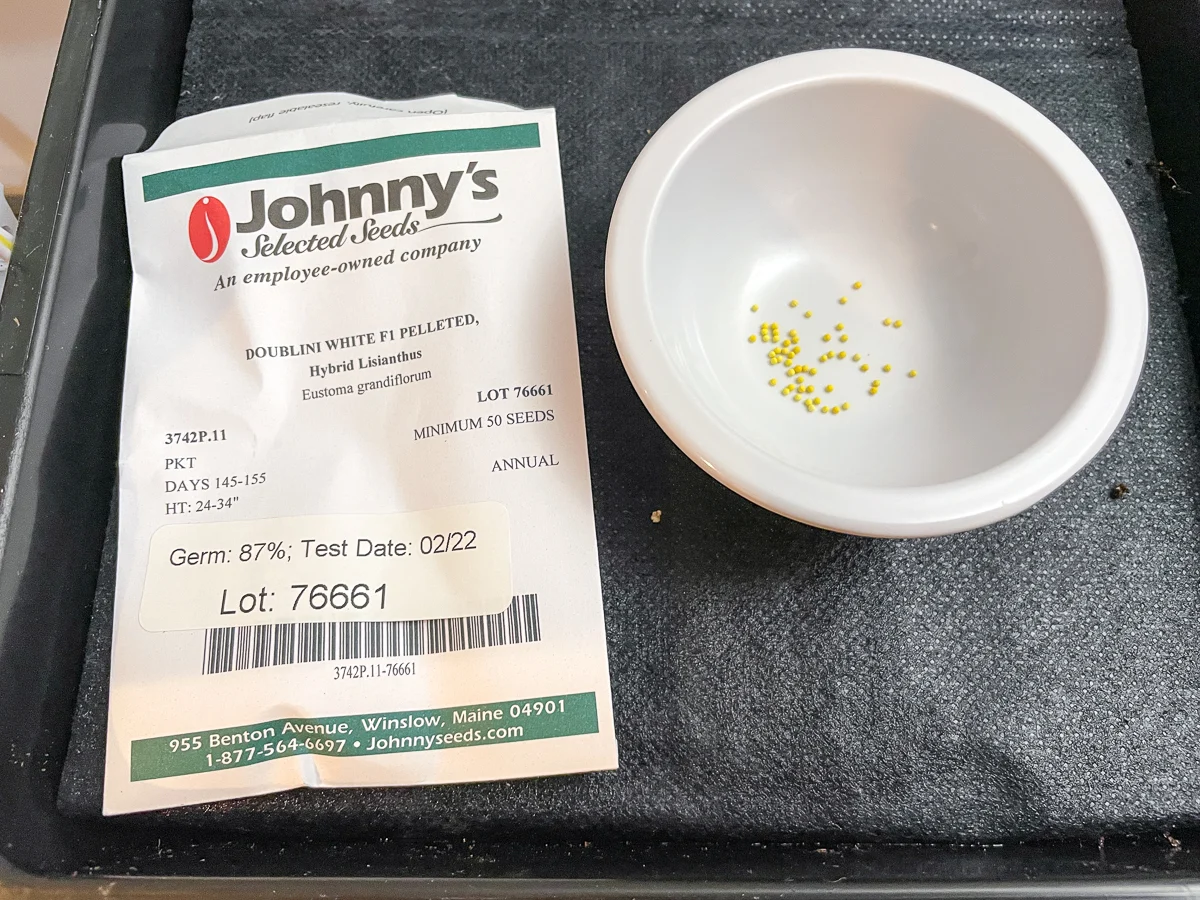
Then I wet the end of a wooden toothpick and stick it to a seed. The coating will start dissolving immediately, so you'll need to move quickly to get it into the seed tray.
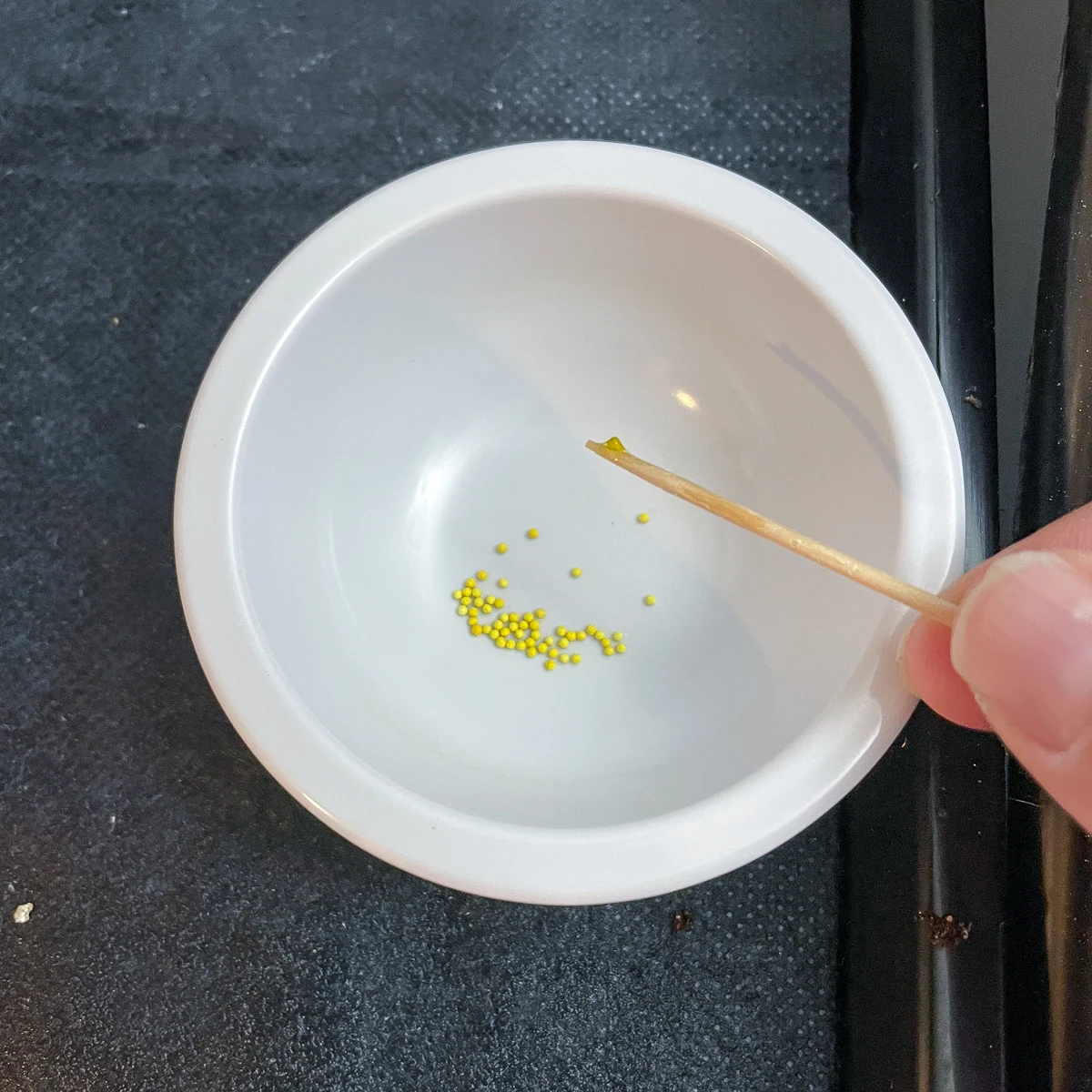
Place the seed on top of the soil, not underneath. Lisianthus seeds need light to germinate, so just leave them on top.

This 24-count seed tray has pretty big cells, so I'm planting two seeds per cell. When the seedlings get too big to share the space, I'll divide the cells in half and pot them up individually.
Dust the soil surface with vermiculite
Algae growth is a common issue when starting lisianthus from seed. They sit in the same soil for months, constantly sprayed with water. Other seedlings get potted up quickly, so they don't have time to form algae on the surface.
While algae isn't necessarily going to hurt the plant, it does rob it of nutrients and moisture. To prevent algae growth, apply a light dusting of vermiculite to the surface of the soil. This will absorb excess moisture and release it when necessary. I've also heard that cinnamon can help, but I haven't tried it yet.
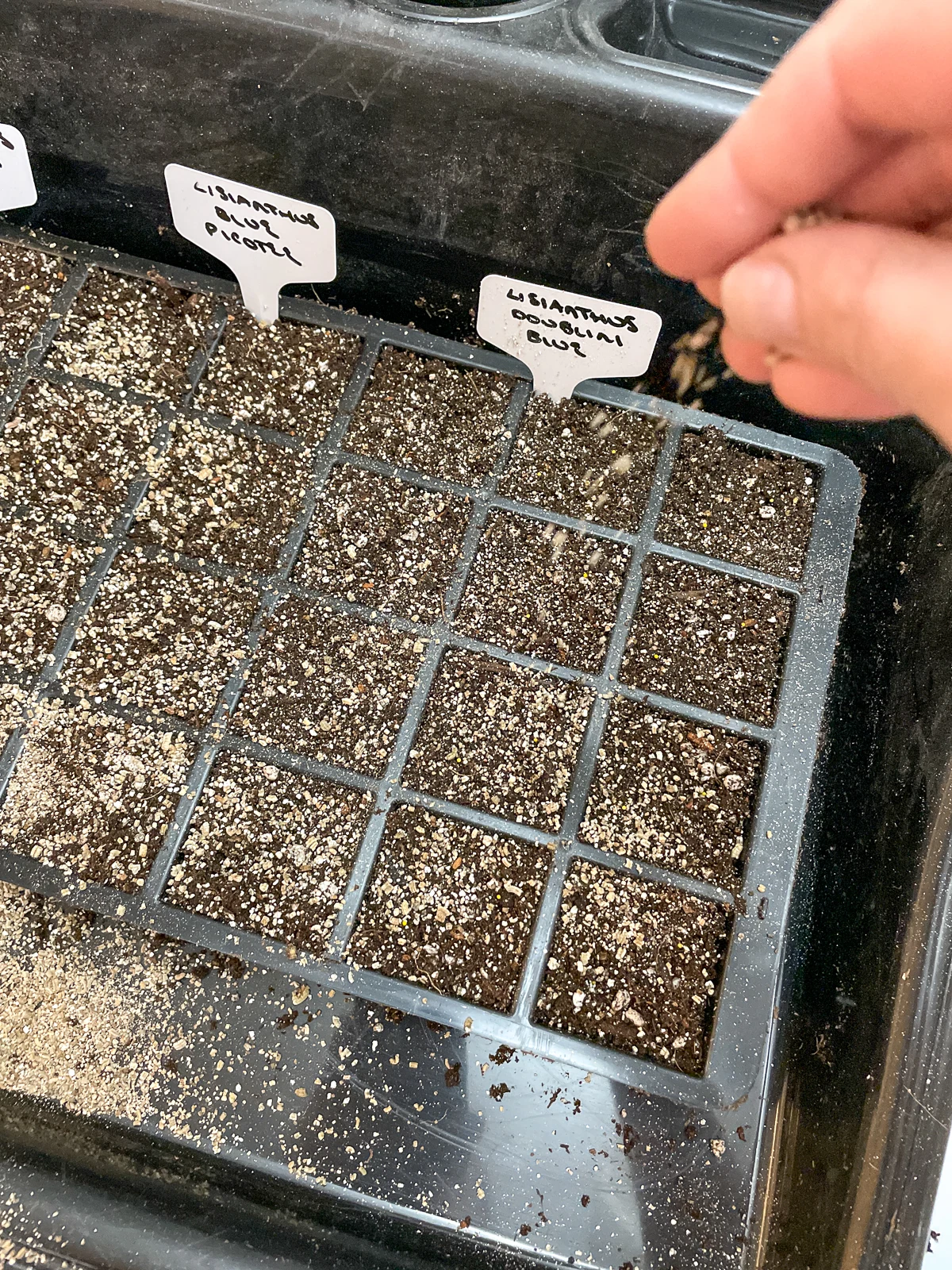
Remember that lisianthus needs light to germinate, so don't go too crazy! Just a light sprinkling will do.
Watering your lisianthus seeds
Before you put the seed tray under grow lights, give the soil a light spray of water first. This will allow the pellet coating to dissolve, so the seeds can start germination. I like to use a pump sprayer on the fine mist setting so I don't accidentally move the seeds around.
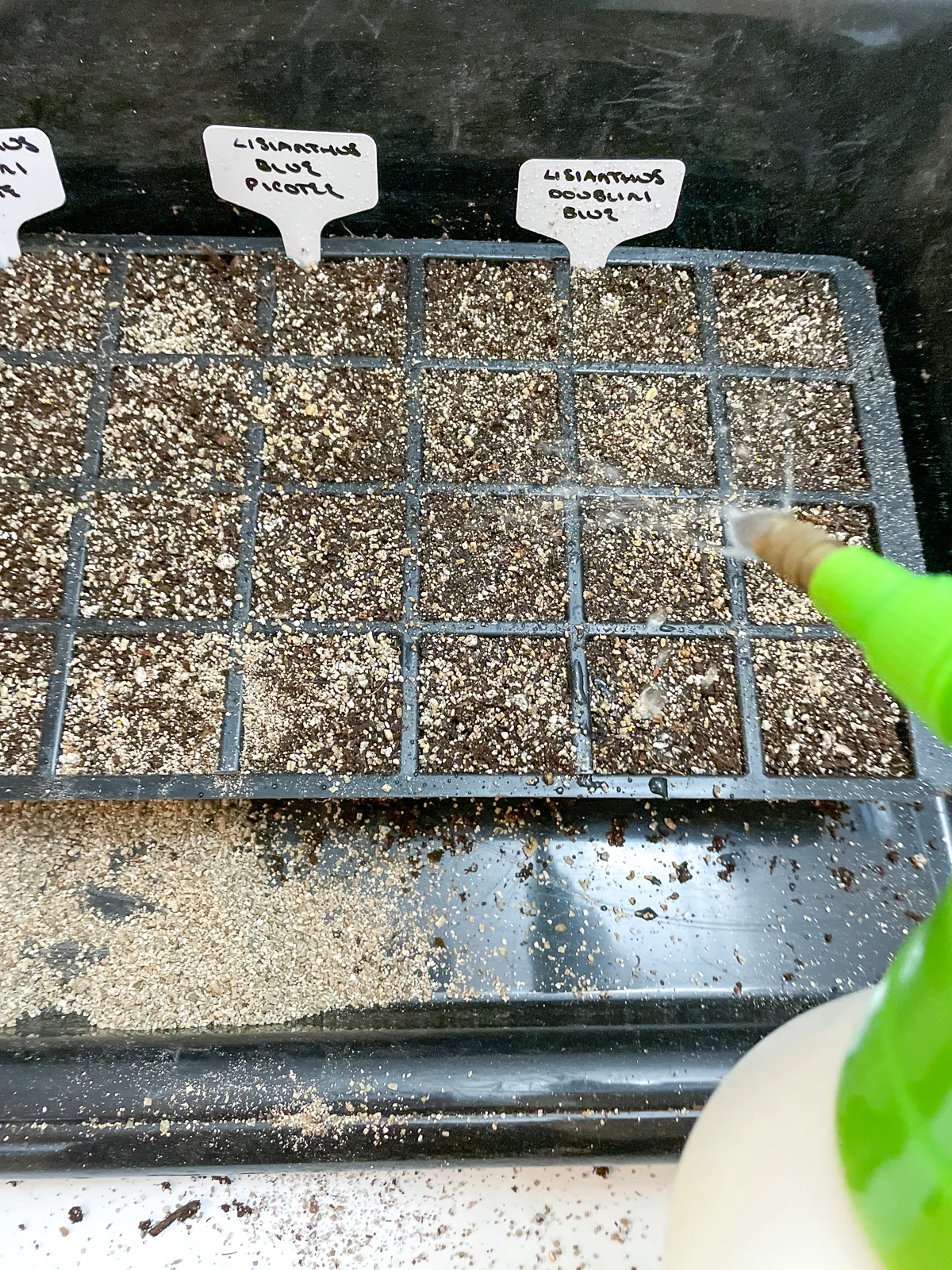
Place a humidity dome on top of the tray and continue watering the seeds at least once a day until you see new growth in the majority of the cells. Once most of the seeds have sprouted, remove the dome and cut back on the watering to allow the soil to dry out slightly.
Place under grow lights with optional heat mat
My grow light station is just a metal shelving unit with grow lights zip-tied to the underside. It's in the basement, which can get a little chilly in the winter, so I placed the tray on top of a heat mat set to 72 degrees. The probe sticks into the soil at the corner to monitor the temperature.
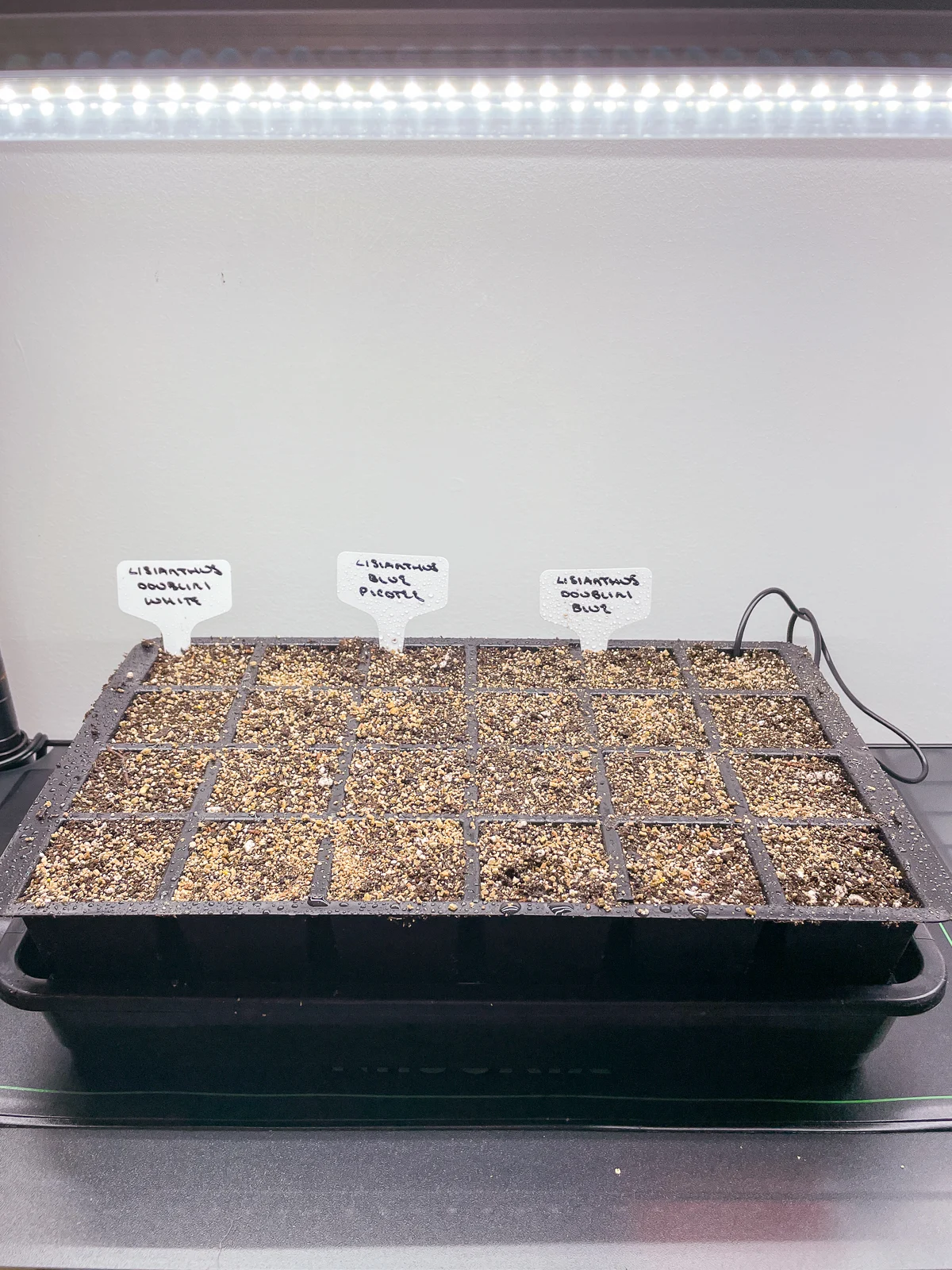
All my grow lights are on a timer which stays on for 16 hours a day. While it's recommended that the grow lights be as close to the surface as possible, I find that it's not worth the trouble to constantly raise or lower the lights as the plants grow.
Lisianthus seedlings
Lisianthus seedlings are TINY, and take a long time to get to a decent size. They're so small when they first emerge, that they're hard to see! Here's a close-up look at two lisianthus seedlings over two weeks after planting.

They should be bottom-watered to prevent algae and to encourage deep roots. The self-watering trays I'm using are a great way to bottom water without having to worry about flooding the roots out.
Lisianthus prefers cooler temperatures when actively growing, so remove the heat mat after you see some seedlings pop up. If the plants stay too warm for too long, they will "rosette" and not form a flower stalk. 60-70 degrees should be fine.
When to harden off lisianthus
It may take months to get lisianthus to the hardening off stage, which is when you start bringing your seedlings outside during the day to get used to the great outdoors. Wait until you see four leaves on each plant before introducing them to colder temperatures. I'll add pictures of this stage when I get to it!
Are you planning to grow lisianthus from seed this year? I'd love to see them in bloom!
Check out these other seed starting tutorials!


